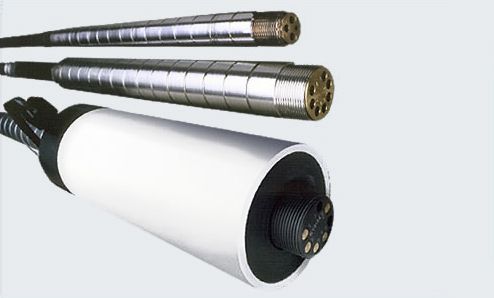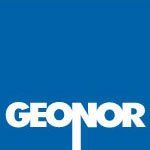BOREHOLE EXTENSOMETER

Overview
Stability and movement behavior of soil and rock masses can be determined by the use of borehole extensometers. A typical rod extensometer consists of a reference head, usually installed at the collar of a drill hole, and one or more in-hole anchors, each of which is fixed in place at a known depth in the borehole. As the soil or rock deforms, the distances between adjacent in-hole anchors change, as do the distances between the individual in-hole anchors and the reference head. This allows an accurate determination of distribution, magnitude, rate and acceleration of deformation in the rock or soil mass intersected by the drill hole.
The number of anchors and anchor depths should be selected based on site geology, geometry of structures in the area, and other site-specific details. The use of two, or more, anchors at various depths allows the engineer to distinguish between potentially dangerous deep seated movements and more trivial surface spalling.
Reference heads are available in either mechanical or electrical types. When there is easy access to the extensometer a mechanical reference head can be attached and displacement readings can be made with a dial indicator or a depth micrometer. If access to the borehole is difficult or if remote reading or datalogging is required, an electrical reference head may be attached. This allows displacement readings to be made with vibrating wire transducers, LVDT’s or linear potentiometers. These can be read with manual read out devices, or can be connected to dataloggers for remote and continuous monitoring. A manual over-ride is available for electrical reference heads to allow manual readings to verify that the electrical system is functioning. All readouts have a standard range of 100 mm (4 in.), but alternate ranges are available as required. Standard cable for remote readouts is a direct burial rated, PVC jacketed type. Armored cable is available for mechanical protection as required

Applications
Monitoring deformation around underground excavations.
Consolidation settlement in soils.
Bottom heave in open cut excavations.
Strain in concrete structures.
Movement behind the face of excavated slopes.
Subsidence over mines, tunnels, etc.
Pile load tests.
Monitoring of mine pillar deformation.
Deformation of foundations in and under buildings.
Roof and wall stability in mines and underground workings.

Features
Monitoring deformation around underground excavations.
Consolidation settlement in soils.
Bottom heave in open cut excavations.
Strain in concrete structures.
Movement behind the face of excavated slopes.
Subsidence over mines, tunnels, etc.
Pile load tests.
Monitoring of mine pillar deformation.
Deformation of foundations in and under buildings.
Roof and wall stability in mines and underground workings.
Click Below to Download Data Sheet
Data Sheet
All Rights Reserved | Geonor, Inc.

